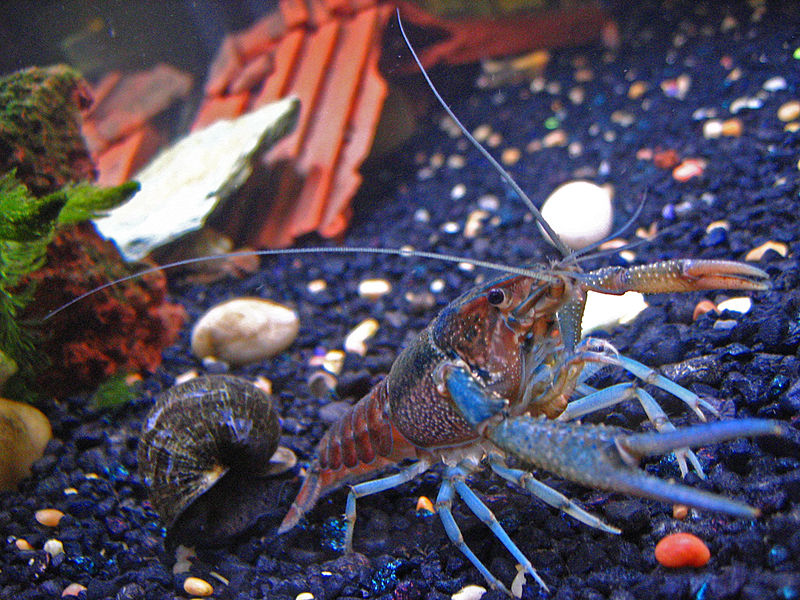Hello, cichlid fans!I’ve been blogging on how to create suitable habitats for various types of cichlids in my previous entries, and this time I want to talk about the set-up that has worked best for me when I keep Central American species. I have kept and bred different species in tanks ranging from 30 gallons to 75 gallons. Most of my recent spawns have taken place in 40 breeders with a base dimension of 36 inches x 18 inches. 40 Breeders are nice, especially since I live in a smaller apartment and I don’t have the space for larger tanks. I have had plenty of success breeding Dovii, Firemouths, and Grammodes in my tank (at different times) and am now working with Cuban Cichlids. Read More »
Category Archives: Freshwater Aquariums
Feed SubscriptionThe Flowerhorn Cichlid, Past and Present – Personal Recollections
 Hello, Frank Indiviglio here. While new fishes occasionally enter the trade (much to our delight!), it’s not often that an entirely new species is created by breeders. But that’s exactly what happened in the early 1990’s, when the incredible Flowerhorn Cichlid burst onto the scene. Since then, “fine-tuning” has resulted in a fish with perhaps the most complicated parentage of any hybrid – 7 to 10 species have contributed their genes! Read More »
Hello, Frank Indiviglio here. While new fishes occasionally enter the trade (much to our delight!), it’s not often that an entirely new species is created by breeders. But that’s exactly what happened in the early 1990’s, when the incredible Flowerhorn Cichlid burst onto the scene. Since then, “fine-tuning” has resulted in a fish with perhaps the most complicated parentage of any hybrid – 7 to 10 species have contributed their genes! Read More »
Setting Up a Tanganyikan Mbuna (Rock Dweller) Cichlid Aquarium
 This time we will talk about setting up an aquarium for Tanganyikan Mbuna, or rock dwelling cichlids. The smallest tank I’ve ever attempted for these fish was a 20 high that housed a trio of brichardis I was breeding. Let’s say for the sake of keeping a community you should start with at least a 30 gallon tank. A 30 gallon has a footprint of 36 inches by 12 inches, so it doesn’t take up too much space, but still gives the fish some room to play.
This time we will talk about setting up an aquarium for Tanganyikan Mbuna, or rock dwelling cichlids. The smallest tank I’ve ever attempted for these fish was a 20 high that housed a trio of brichardis I was breeding. Let’s say for the sake of keeping a community you should start with at least a 30 gallon tank. A 30 gallon has a footprint of 36 inches by 12 inches, so it doesn’t take up too much space, but still gives the fish some room to play.
I keep my rift lake aquariums pretty much the same, whether its Malawi, Tanganyika or Victoria. With this particular type of set-up you may need to do some minor tweaks to the pH, and live plants might have a better chance than in other cichlid set-ups. Let’s start from the bottom up. Read More »
New Species Update – a Giant, “Bearded” Crayfish is Discovered in Tennessee
 Hello, Frank Indiviglio here. I’m glad to see that crayfishes are beginning to get more attention from aquarists. Many can be bred in the aquarium, and their colors, ranging from apricot to blue and deep red, rival those of any marine invertebrate. The USA, home to over 80% of the 600+ known species, is a center of their diversity (84 species occur in Alabama alone). The year 2011 opened with a bang for Crayfish enthusiasts – a unique new species, twice the size of those nearby, was discovered Tennessee. “Tennessee Giant Crayfish” would seem a suitable common name, but for now the unique crustacean is known only as Barbicambarus simmonsi. Read More »
Hello, Frank Indiviglio here. I’m glad to see that crayfishes are beginning to get more attention from aquarists. Many can be bred in the aquarium, and their colors, ranging from apricot to blue and deep red, rival those of any marine invertebrate. The USA, home to over 80% of the 600+ known species, is a center of their diversity (84 species occur in Alabama alone). The year 2011 opened with a bang for Crayfish enthusiasts – a unique new species, twice the size of those nearby, was discovered Tennessee. “Tennessee Giant Crayfish” would seem a suitable common name, but for now the unique crustacean is known only as Barbicambarus simmonsi. Read More »
Setting a Good Example – Using “Dither Fish” to Encourage Activity

 That Fish Blog – Aquarium Advice and Information
That Fish Blog – Aquarium Advice and Information
